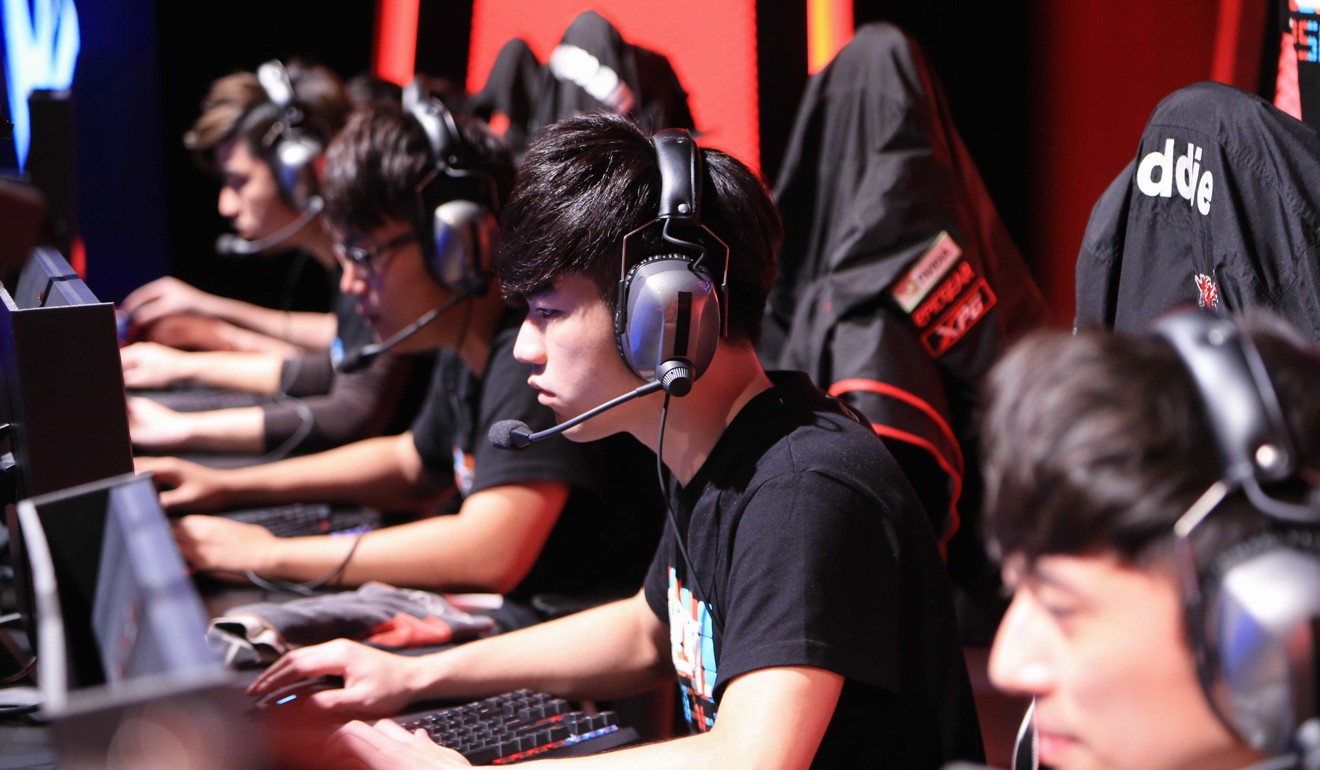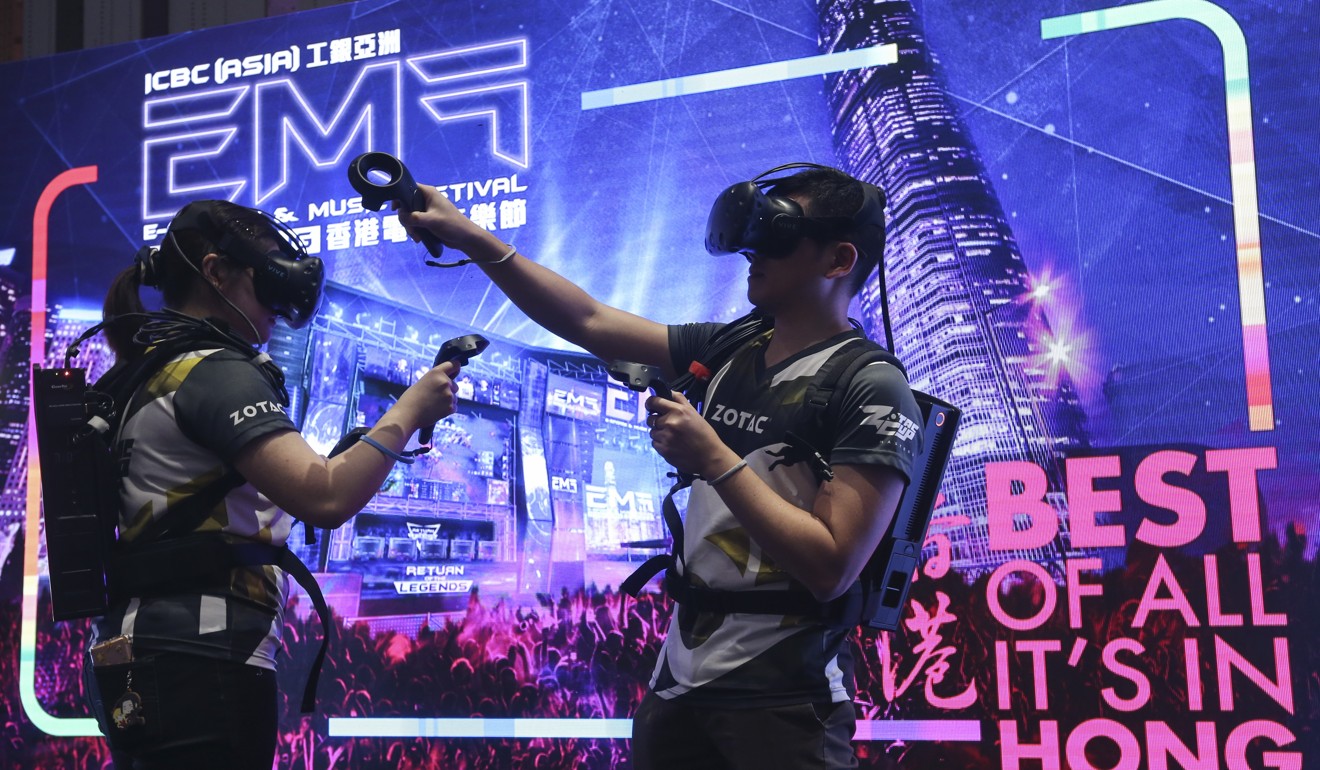
Big crowds, big bucks: a beginner’s guide to the e-sports phenomenon that’s conquering China
The popularity of e-sports is exploding around the world, with huge numbers watching professionals competitively play video games.
About 43 million people, for example, watched coverage last year of the world championships for the multiplayer fighting game League of Legends that were held in cities across the United States.
Professional sports such as soccer and basketball have video games based on their disciplines and are also signing gamers to play for their e-sports teams.
Chinese tech giants including Tencent, Baidu and Alibaba, which owns the South China Morning Post, have moved into the e-sports arena. And in Hong Kong, come August, top video gamers worldwide will fly into the city to compete at a concert-size venue.
Here’s a guide to this burgeoning sector:
What are e-sports?
Short for electronic sports, e-sports refers to organised, competitive video gaming events played before live audiences or broadcast over the internet.
Some games include digital versions of real-life sports, such as the football simulator FIFA, but most of the top titles are first-person shooters or multiplayer fantasy games.
Is it really a sport?
E-sports often involve professionals, playing not for entertainment, but for a living, said Li Shengxin, an associate professor of management at Beijing Sport University.
“Any game involving competition with a set of rules can be considered sport,” according to Li.
In some countries including China, e-sports are recognised by government.
Just like table tennis and football, the State General Administration of Sport on the mainland has established a national e-sports team consisting of more than a dozen players who play various video games, including League of Legends and the multiplayer shooter Dota 2.
The gamers sing the national anthem before the country’s flag while taking part in some international competitions. Many, however, remain unconvinced about e-sports sporting credentials.

An online survey conducted by the state-run newspaper the People’s Daily in 2013 said that more than 80 per cent of those polled opposed government recognition of e-sports. But after years of effort by organisations such as the International e-sports Federation, headquartered in Seoul, the events are winning increasing recognition as legitimate sports.
E-sports will be included in the sporting programme at the 2022 Asian Games to be held in Hangzhou in China.
The Los Angeles 2024 Olympic bid team has also expressed an interest in e-sports as a way of generating more interest in the games among young people.
Who plays and who’s watching?
Many people aged between 21 and 35 like e-sports as much as conventional sports, according to an internet trends report released in May by the venture capital firm Kleiner Perkins Caufield & Byers.
Most spectators watch from home, but e-sports competitions can attract tens of thousands of live spectators at stadiums across the world. One League of Legends championship final attracted 40,000 spectators to Seoul’s World Cup Stadium in 2014.

Only the very best gamers can secure a place in a professional team.
Many are considered veterans by the age of 20 and consider retiring because of the quick reflexes and intense concentration needed.
Are e-sports bad for health?
To increase and maintain their top performance, professional e-sports athletes can spend 16 hours sitting in front of a computer every day.
“The intensity of exercise can match any other traditional sports. It can be self-torture,” a government official overseeing the development of e-sports in China told the South China Morning Post.
But the official said the hard training did not necessarily lead to illness.
Most athletes “treasure” their health because they have no chance of winning if they are sick or in poor condition, he said. Breaks are taken regularly. The daily schedule is also designed in a scientific manner to minimise the risk of mental or physical burnout, he said.
“A round of a battle usually finishes within 15 minutes. Everyone gets up and stretches their back,” said the official, who asked not to be named.

Negative effects such as addiction to playing and deteriorating eyesight mostly occur among non-professional players because they are unsupervised and do not know how to protect themselves, according to the official.
“The development of e-sports will increase the public awareness of proper gaming and reduce the number of video game victims,” he said.
How big is the e-sports business?
The e-sport market generated US$500 million last year, with annual growth of 22 per cent expected up to 2019, according to the international banking and finance company Goldman Sachs.
Events attracting tens of thousands spectators and tens of millions viewers worldwide can offer huge prizes. A Dota 2 tournament in Seattle last year offered a prize pool of more than US$20 million.
How rich are professional gamers?
The rewards can be lucrative for the very top players. The computer gamer Saahil Arora, aged 27, has earned US$2.7 million during his career, according to US media reports.
The highest-earning Chinese player, Li Peng, is ranked fifth in the world in terms of earnings, with nearly US$2 million, according to Esportsearnings.com.

